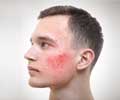Researchers have reported that a previously unknown side effect of an unnamed drug currently on the marketplace could be useful for treating acne.
Researchers have reported that a previously unknown side effect of an unnamed drug currently on the marketplace could be useful for treating acne.
A UK company is about to start a Phase 1 trial with the drug involving 18 healthy human volunteers and the results are expected to be announced later this year.In an earlier Phase 1 study in nine healthy human volunteers, the treatment was seen to reduce the excretion of sebum by the skin, which is associated with acne development, by up to 70 pct.
“The Phase I results are startlingly good,” said Nigel Blackburn, director of clinical development at the company, Summit, which is organising the trial.
“Reducing sebum production has been the “holy grail” of acne treatment for 30 years, and there has been little success aside from Roaccutane which has significant side effects,” he added.
The current ‘gold standard’ for acne treatment, Roaccutane can cause a wide range of side effects, including teratogenicity – which leads to abnormalities in the unborn foetus of pregnant women, and has also recently been linked to depression and (inconclusively) to teenage suicides. The market for acne treatments is worth several billion dollars, and any new treatment developed without side effects could potentially reap blockbuster sales.
Although Summit has not disclosed the name of the drug now under evaluation, the company says it represents an entirely new class of compounds for treating acne.
Advertisement
The company hopes to begin critical Phase 2 trials to assess the efficacy of the drug in acne sufferers next year. Depending on the results, the drug could either be formulated as a stand-alone topical treatment or more likely in combination with other existing treatments. The company has already been in talks with several interested companies, who are waiting to see whether the initial results can be repeated in a larger study group.
Advertisement
Source-ANI
LIN/J











